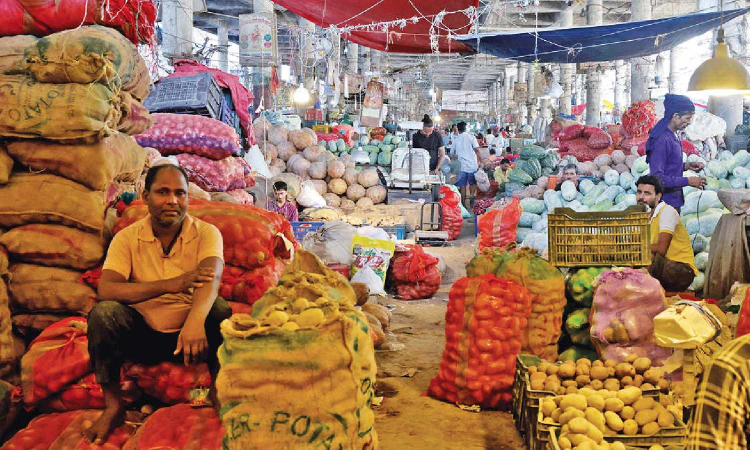Domestic strength: A shield for India from tariff shocks
Tariffs, while impactful, expose India’s inherent advantages and economic resilience: a self-reliant, consumption-driven economy with strong internal buffers, reflecting the ‘Atmanirbhar’ approach in action and ability to withstand external shocks

INTERNATIONAL trade has historically remained peripheral for many Indian businesses. Given India’s vast domestic demand, several enterprises catered only to the local market. Until 2022, when India began closing key trade deals, there was even a sense of ‘export pessimism’ — driven by global uncertainties, inconsistent standards, intense competition, and lack of export intelligence. However, a record export performance in 2021–22 marked a shift, encouraging government and industry alike to embrace trade deals, including the one with the UK.
The US’s recent tariffs on Indian exports highlight the complexity of Indo-US trade and India’s stance on sensitive sectors like agriculture and dairy. Total agricultural trade between the US and India remains modest, averaging only around $7 billion annually. The broader trade relationship is larger, averaging $130 billion in recent years. However, a significant disparity exists in tariff profiles, which forms a key point of contention. As we note in our study published in Agribusiness jointly with Munisamy Gopinath and Kannan Kumar, India’s high agricultural tariffs — averaging 39% versus the US’s 5% — are rooted in the need to protect smallholder farmers and ensure food security. The study further highlights nearly 90% of India’s agricultural imports face tariffs above 25%, while over 90% of US agricultural imports face tariffs below 10%.
This disparity is not arbitrary. The political economy of India’s agricultural trade policy is driven by the sheer scale of its farming population, characterised by small farm sizes and a high dependency on agriculture for livelihoods. The paper emphasises that these high agricultural tariffs are a strategic tool aimed at preventing market disruptions and avoiding dependency on foreign supplies.
India’s economic resilience is fundamentally a function of its vast internal market. To those who understand the core principles of international trade, it is clear that commanding or controlling a large economy with such a huge domestic base is a difficult and often futile exercise. India’s economic engine is driven by domestic consumption. Private aggregate consumption accounts for approximately 65% of GDP, a figure that showcases the nation’s internal demand as the primary growth driver. This makes India a consumption-driven economy, more so than export-focused nations.
This internal strength is further reinforced by India’s massive non-traded sector. The services sector, which is largely non-traded, contributes about 55% of India’s GVA. This substantial economic base is not dictated by international trade flows. Similarly, the agricultural sector, while facing its own challenges, primarily serves the domestic population, and is therefore largely non-traded. This powerful non-traded base provides a substantial buffer against external shocks. Additionally, the robustness of India’s economic structure is supported by a dynamic informal sector that contributes a notable portion of the GDP.
The effectiveness of tariffs on such an economy is demonstrated through our economic modeling exercise in the study mentioned above. We modeled two scenarios under a “America-First agenda”. In the first, a direct 25% US tariff on steel and aluminum was found to reduce India’s overall exports by $1.32 billion and contract its GDP by $154 million. By contrast, the same policy would lead to a steep decline of $120 billion in US GDP. A second scenario, modeling broader trade restrictions between other major economies in North America, revealed an even more compelling outcome. Under these conditions, India’s GDP was projected to grow by $1.56 billion, as its manufacturing exports, such as automotive components and textiles, became more competitive in the global market. This quantitative assessment highlights India’s ability to strategically realign and partially offset trade disruptions, further underscoring its unique position in the global economy. While this study did not take into account the details of Liberation Day tariffs, it does provide us an idea as to how Indian economy is robust enough to take advantage of tariff arbitrages if any. Even with the 25% tariffs, India is still better off compared to several other countries like China, Switzerland and Brazil and therefore can still derive some benefits from marginal trade diversion and minimize the losses. Of course, further hikes on industries importing oil from Russia may erode that advantage notably.
This brings us to the question of concessions on sensitive sectors like dairy and agriculture, just to reduce that 25% to a possible 15-20% range, which has been the norm for the recently concluded trade deals with the US, by countries such as the EU, Pakistan, Bangladesh, South Korea, Japan, etc. India’s strict dairy rules effectively ban US imports. This firm stance is not merely a negotiating tactic but a reflection of the political and economic reality that a country with a large number of small farmers cannot afford to open its markets to foreign competition without risking significant domestic turmoil. For India, a trade agreement must be “mutually beneficial,” and not one that undermines the livelihoods of its populace.
Tariffs, while impactful, expose India’s deeper strength: a self-reliant, consumption-driven economy with strong internal buffers. The government’s resolve underscores a confident ‘atmanirbhar’ approach — prioritising national interest while remaining globally engaged.
The author is founder, Infisum and non-resident fellow, NITI Aayog



